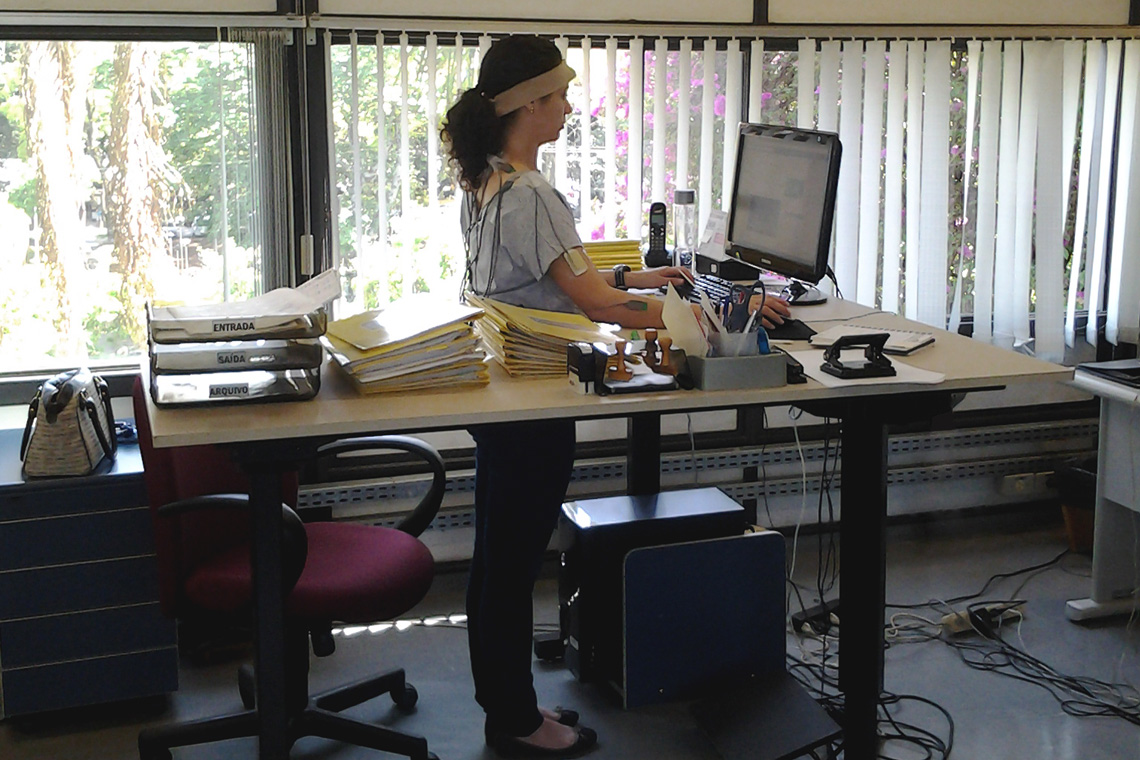Documentation of sit-stand table usage patterns and associated biomechanical exposures of office workers over a 2-month intervention period
Adjustable sit-stand desk being used in a standing position

Motivation
Office workers generally spend the majority of daily work-time sitting, and prolonged sitting is associated with several health risks such as obesity and type II diabetes.
Objectives
To determine the effectiveness of sit-stand workstations to reduce occupational sitting time among computerized office workers over a sustained intervention period, compare 2 different sit-stand based interventions, and to quantify the associated effects on biomechanical exposures.
Approach
Office workers in a university setting in Brazil were provided sit-stand workstations and their behaviors were documented in real work settings over a 2-month intervention period.
Two kinds of sit-stand table interventions were developed: One group of workers were provided with a standard electronically controlled table that they could use according to their own discretion; the second group was provided with a semi-automated system prompting the user to stand for 10 minutes after every 50 minutes of accumulated sitting.
Currently, we are studying the way the workers used both these interventions, whether they had any effect in reducing total sitting time over a work day and breaking up continuous sitting into alternating patterns of sit and stand. We are also analyzing the effects of individual table usage patterns on postures and muscle activities in the neck-shoulder, hand-arm and low-back regions, as well as on perceptions of fatigue and productivity and musculoskeletal symptoms.
This project is an international research collaboration between Virginia Tech, the Federal University of Sao Carlos in Brazil, and the University of Gavle in Sweden.
PI: Divya Srinivasan (Virginia Tech)
Researcher: Dechristian Barbieri (Federal University of São Carlos, Brazil)
Sponsors:
- São Paulo Research Foundation
- The National Council of Technological and Scientific Development in Brazil
- The Swedish Research Council for Health, Working Life and Welfare
Period: 2014 - 2017


